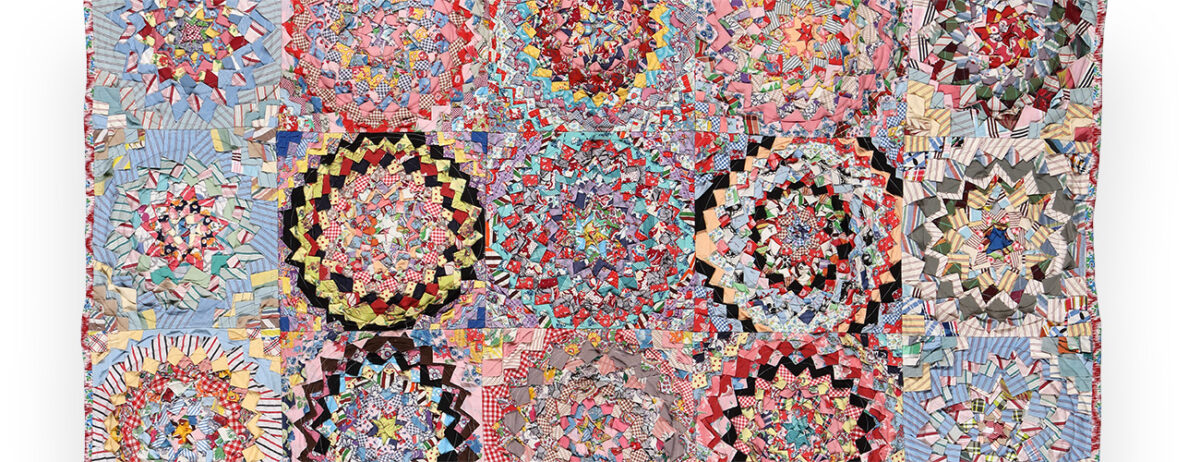Stacey A. Watson
How can quilts made by Black women change the way we tell the history of abstract art?
Unidentified Alabama Artist, Untitled (Pine Burr Quilt) (detail), 1930s–1940s, cotton, 73 × 63 inches, High Museum of Art, Atlanta, purchase through funds provided by patrons of Collectors Evening 2017, 2017.201.
Unseen
What do you see? How do you feel when you look at me?
Do you see me, or are you simply looking at me—staring, judging, picking me apart?
As if I do not measure up to your standards of beauty, all bordered with imperfections. Your expectations of skill are not shown in my stitches, and your definition of art clearly does not define me.
I stand alone, have been alone, have been reminded for years I am not equal. I am displeasing to your eye; you scoff at my binding, yet you do not understand what has bound me over for centuries. You do not get me, cannot seem to figure me out; you question if I should be put on display.
I, too, have a story like that piece over there, behind you to the left and over your right shoulder.
Do you see those pieces, works of art?
Am I not deserving to hang here screaming silently to be seen, to be heard, recognized, appreciated?
LOOK AT ME!
Come closer . . . a little bit more.
Look at the story within me. Look at the generations of history hiding in my corners. I am sharing the narrative of those who never got a chance to tell theirs. My fabric, or what you may deem as scraps, includes the memories, recipes, experiences, and fragrances of family reunions, photographs, Sunday dinners, and revivals.
I represent the only surviving family tree. I am the legacy derived from ancestral cloth that was lost, found, and passed down.
You may not understand what I am, but you understand the hands that mended me. You understand those hands, with a vision, created art for you to admire. Imagine the hands that created me coming together to pray for forgiveness, healing, strength, and freedom. Yet they were constantly digging at the roots of rejection, discrimination, and degradation. These hands have torn at the seams of injustice and have sewn together educational opportunities and determination and created communities for us all to embrace.
These hands have bled while tending to someone else’s wounds—all the while soothing someone’s soul. Search me for the tales of these hands.
I saw you look at me, walk past me, and then you came back. Did you find me intriguing?
Am I valuable enough to be sold to the highest bidder? Can you share my story, my pain, my past? Or do you leave it to interpretation, opinion, or simply say, “it’s a conversation piece”?
I am staring back at you, the way you are staring at me. You cannot label me because you are not really sure what you see. You are afraid to misidentify me; you would hate for someone to hear you say we all look alike. Well, do we?
I was never supposed to be the topic of discussion, but you cannot stop talking about me.
You examine my hair, my threads, my jewelry, all while analyzing the stones I have had to carry. Those stones, someone threw at me. They were added to the metals and fibers you see to create something you never expected—a work of art undefined.
For years you have walked past me. You never stopped, never acknowledged me, even when I tried to look like what you liked. I could not win when I tried nor when I failed. I accepted I would always remain invisible, but I see you are still here, staring . . .
You see me now.
